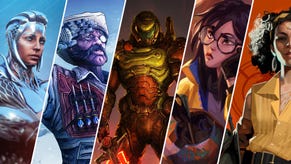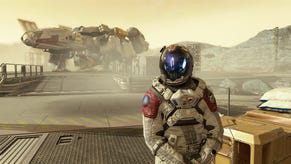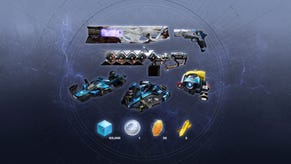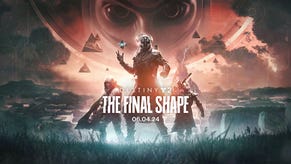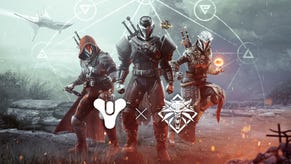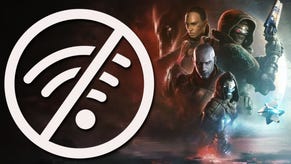How Destiny 2 Can Win Us Back
Destiny 2 has had a rough debut year, but here's what Bungie can do to set the game back on track.
This article first appeared on USgamer, a partner publication of VG247. Some content, such as this article, has been migrated to VG247 for posterity after USgamer's closure - but it has not been edited or further vetted by the VG247 team.
This article originally ran back in February. We're republishing it here with the announcement of the new Warmind expansion.
No one expected Destiny 2 to fail, but it did. As the player base dwindles and complaints soar, it’s clear that Bungie needs to make a change.
To its credit, Bungie has promised some fixes, but are they enough? Other service-based games have failed before; Final Fantasy XIV had to be rebooted as A Realm Reborn. Ubisoft had to put an impressive amount of work into The Division and Rainbow Six Siege to keep them afloat. Even Bungie spent months patching the first Destiny. This kind of change is needed, but what will it take to bring us back to Destiny 2?
In November, Bungie finally responded to criticisms around the game. In January, it offered a clearer picture at its future plans. After a few weeks, it posted its latest development road map. Recently, Bungie explained in detail how it wants to change raids and the weekly Nightfall activity to be more rewarding. While this is all encouraging, I’m not sure it’s enough, and I’d like to explore why.
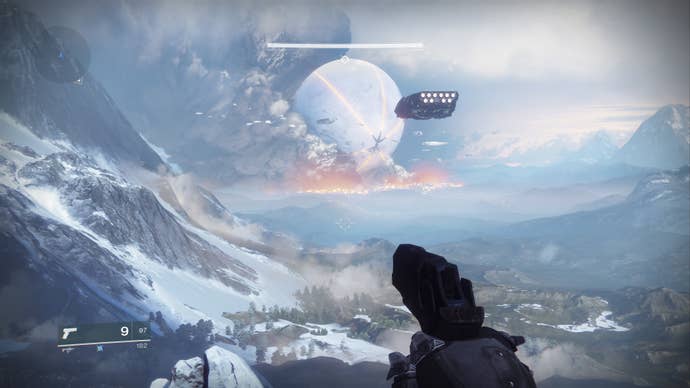
Saving Destiny 2
In a service-based game like Destiny 2, once players complete the campaign, they partake in what we call “endgame content” like raids, strikes, and other content which is designed to be replayed. The player shifts from completing new content to finding the perfect weapons, building the perfect set of armor, or deriving enjoyment from the game for other reasons.
When a service-based game fails, it's usually because of its lack of replayability. The Division is a great example of this. While the campaign was fun, there weren’t many reasons to hop back in once the game was completed. Since its release, Ubisoft has fought hard to bring The Division back, but it wasn’t until Patch 1.7, which introduced the first global event, and Patch 1.8, which added new maps and modes to the game, that players really started coming back.
It’s tempting to suggest that all Bungie needs to do is work on a series of small patches over Destiny 2’s lifespan and hope that players will eventually come back. Destiny brought plenty of players back with the release of The Taken King, so this seems like a great suggestion, but I don’t think that will work for Destiny 2. Nobody came back to Diablo 3 because of Reaper of Souls; they came back because of the legendary Patch 2.0.1, the patch that completely rebuilt Diablo 3’s loot systems and combat, addressing nearly all of the major complaints players had with the game. Players would have been a lot more cautious about spending their money on Reaper of Souls if 2.0.1 hadn’t primed them one month prior.
Destiny never had it this bad. As we discussed in our last article, Destiny’s hardcore PvP mode Trials of the Nine never dropped below 145,000 players. Destiny 2’s Trials player count has hit record lows every single successive weekend, dropping to 122,000 players, eventually 77,000 players, then 72,000 players, and so on. Destiny had plenty of people willing to say “now is a great time to return to Destiny,” because they never left the game to begin with. Destiny 2 keeps shedding players.

Bungie’s shown us its plan to make some improvements, and they sound solid, but I’m not entirely convinced those changes are enough to bring players back to the game. Take the Nightfall changes, for instance. Nightfall is a once-a-week activity with no matchmaking, so any improvements will have minimal impact on the average player’s day-to-day gameplay experience. The fixes are welcome, but they only impact one mission, per character, per week. That’s not the kind of fix that’s going to bring someone back to the game. Plenty of other updates are planned, but who’s going to reinstall Destiny 2 because they got 50 more inventory slots or improvements to their emote selection?
The other problem is that Destiny 2 doesn’t have a lot of time. Destiny’s life cycle is supposed to last two years: one year the game releases, the next, an expansion releases, and then an expansion follows that up. Because of the Destiny 2 delay in 2016, Destiny got another expansion, Rise of Iron. Games like Warframe and The Division, which have a much longer lifespan than Destiny’s two-year cycle, benefit from frequent, consistent update schedules. Destiny does not have that luxury. It needs that big “wow moment” update or expansion, because it can’t spend almost two years getting to Patch 1.8 the way that The Division did. Bungie needs players to come back before Destiny 2’s next big expansion.
All this got me thinking: what kind of patch would bring players back? What might Destiny 2: A Shooter Reborn look like? There are plenty of dream requests one might want, like bringing all the content from Destiny forward, but that’s unlikely, even though it would be great. This patch needs to be something significant enough to bring players back, realistic enough to be possible, and designed in such a way that it helps Destiny 2 succeed as a cool, service-based game. We don’t want to change Destiny 2 into something it isn’t, we just want to make it better. It needs to serve the players, making Destiny 2 a game worth investing time and money in, and it needs to serve Bungie, allowing it to sell content that keeps the lights on and employees paid.
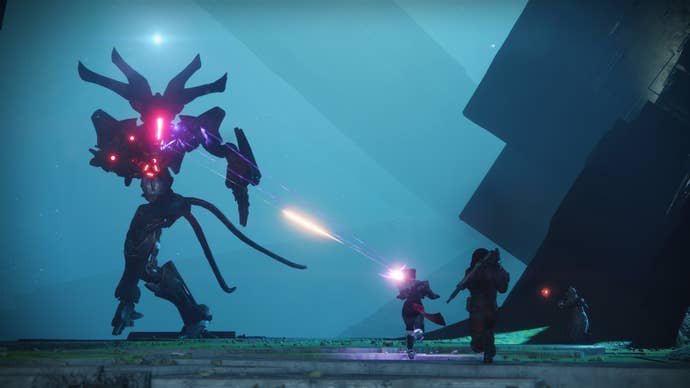
Fix The Combat
No matter how many fixes a game receives, players won’t come back if the core is rotten. For a shooter, that means the combat. Destiny 2 has a lot going on for it in the combat space, but there’s still a lot that Bungie could do to improve.
The secret to a good shooter is the way it encourages players to plan. When you walk into a room full of enemies, what weapon do you use to dispatch them? Who do you choose to shoot first? When do you use your grenade? Bungie has historically been amazing at this, and Destiny 2 gets a lot of things right, but when it comes to weapon selection, things fall apart.
Destiny 2 relies on a two-type, three-weapon system. You have two slots for primary weapons, guns that are general-purpose weapons with no major drawbacks, and a third slot for power weapons, which is any kind of weapon that can kill in one hit. It’s easy to carry two interchangeable rifles and a rocket launcher and never have to worry about changing your loadout.
The weird thing is that Destiny solved this problem. Moment to moment gunplay was exciting because players had a three-class setup. Like Destiny 2, it had a general-purpose primary class, and it had a heavy class for swords and rocket launchers. Unlike Destiny 2, snipers, fusion rifles, and shotguns were in the special class, rather than the power weapon class. I loved firing a heavy weapon at a group of enemies, then rushing in with a shotgun or fusion rifle. I loved needing to swap between my sniper rifle and shotgun in the raids depending on the encounters. There’s no need to make those interesting choices in Destiny 2, which makes the combat feel one-note in comparison. Switching between a scout rifle and a pulse rifle doesn’t lead to a combat experience as varied as switching between a scout rifle and a shotgun.
In an attempt to make combat somewhat challenging, Destiny 2 forces players to switch weapons only when they run out of ammo, and it does so by limiting ammo drops for the gun players are currently using. It’s a nasty take on the unpopular “trickle” difficulty modifier from Destiny, and no one seems to enjoy it.
Destiny 2’s element system disappoints as well. There’s little difference between matching the right or wrong elemental damage, especially for endgame content. If you get the right element, there’s a small explosion. If you get the wrong element, any difference is less than tangible.
This is unfortunate, because plenty of games have exciting systems. Some games, like Borderlands, limit damage against the wrong element and provide a huge benefit against the right one, and others, like Divinity: Original Sin, let players combine elements in interesting ways, like using wind and water to create ice.
Gun systems work best by keeping players engaged, and as a designer, you keep them engaged by encouraging them to make decisions and plans. Destiny 2 doesn’t encourage players to make decisions, instead flattening the overall experience. Because of the two-primary system, ammo trickle, and an unexciting elemental system, Destiny 2 lacks a lot of the mechanical oomph of its predecessor. One of the biggest ways Bungie can bring players back to the game is by reworking the system to allow for players to make right and wrong decisions about the guns they’re carrying. I’d love to see Bungie bring back the old system, but some fans have begged for a four-slot system that would take a lot more work to implement.

Improving Engagement
Getting players engaged with the combat is important, but it’s not the only level of engagement Destiny needs. What keeps you playing a game you enjoy? Why did people spend a thousand hours in Destiny, hundreds of dollars on Warframe, or capture all 151 original Pokemon? It’s because they provide players with a sense of progression or accomplishment.
Right now, when players log into Destiny 2 after completing their weekly milestones, there’s nothing left to do but complete a selection of limited challenges from each of the game’s destinations. Every day, you will almost certainly have to complete one public event on each planet or loot one lost sector, and you will have to complete these objectives on the game’s five planets every day. This can get boring and tedious, and seeing the same planets every single day can get dull quickly.
Destiny avoided this problem through bounties. Bounties were themed, they lasted as long as you wanted them to, and you could track the progress of several at once. They were randomized each day, so you could always log on and find something to do. Bounties were a superior solution to challenges not just because they were more diverse, but because they were themed to various planets, which kept you from feeling like you had to visit every planet every day, and they encouraged you to experiment outside of your comfort zone. For instance, switching subclasses to get the other elemental bounties helps you change things up, so you're not just favoring that Solar subclass all the time.
Destiny 2 could provide players with something like a Pokedex, encouraging players to find all the shaders, emblems, guns, armor, ghosts, dances, and ships in the game. Once a player discovers these items, the game unlocks that item for players in the list. Find a shader you like? Great! Now that’s unlocked in the shader menu, and you can access it at any time. Destiny had a system like this, the kiosk system, which let players unlock almost everything in the game, from Sparrows to ships to shaders, and keep track of what they needed to unlock. Destiny 2 has room to improve this by letting players see what vendor items they already have, putting the collections into one kiosk, or giving some of the items more predictable unlock paths.
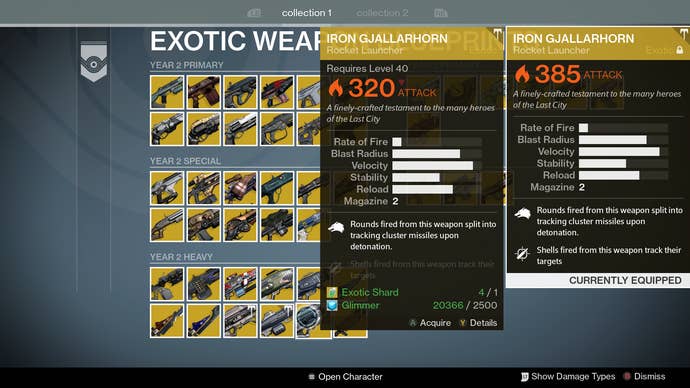
Another way to improve player engagement would be to add item and activity-specific challenges. In the Borderlands games, the “Badass” system rewards players for performing various feats with small, single-percent improvements to their stats. Warframe rewards players for “mastery,” improving player stats by letting them level up each weapon to level 30. Destiny dealt with this in two ways, through Grimoire score and record books.
Grimoire score was earned through everything from finding secrets to defeating specific enemies. Record books provided similar challenges, but progress was tracked in game, and players received unique rewards for completing multiple challenges.
It would be nice if Destiny 2 had a more in-depth progression system as well, with daily systems like bounties and more long-term systems like in-game challenges. Ideally, all of this information is in one easy-to-access place, so players can quickly check their progress to see what they need to do. Want a specific ghost skin? Grind this strike or that planet to find it, and when you do, it unlocks an entry in your collection where you can use it at any time. Finding it adds to your Ghost collection score, which adds to your overall player score, which you can use to show off how experienced you are at the game.
Giving players an opportunity to invest and rewarding them for investing will help players stick with the game. Destiny 2 is introducing a similar system for PvP players soon, but it has no tangible rewards, isn’t a game-wide score. It’s not for PvE activities either, which makes up the bulk of Destiny 2’s content.
But even then, it might not be enough to keep people playing.
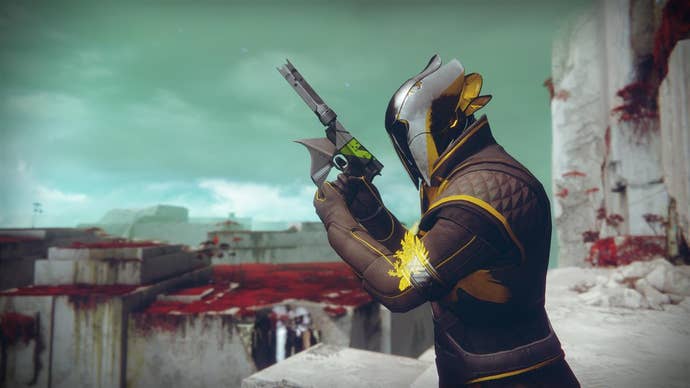
Making Loot Interesting
People play service-based games because of the rewards. Warframe is all about the mastery grind. Monster Hunter’s big appeal is trying to build that perfect set. Pokemon is about catching them all or building the perfect competitive team. Destiny 2, like its competitors, is about loot—if it wasn’t, loot wouldn’t be the reward for literally everything in the game.
If loot is what we chase, then loot has to be exciting.
Destiny 2’s endgame loot mostly comes in the form of legendary gear. One gun, Nameless Midnight, has the explosive rounds perk (this means that its bullets explode). Every Nameless Midnight drops with the exact same perk. Once you get one, getting more is like receiving cheap socks for Christmas. Contrast that with some of the scout rifles I’ve picked up in the original Destiny, like Cryptic Dragon. I’ve received many Cryptic Dragons over the years, but my favorite dropped with a perk that increases stability when I cause damage, explosive bullets, and a perk that speeds up my reload when I get headshot kills. I have another rifle, Hung Jury, that refunds my bullets after every three headshots and causes my enemies to explode in a delicious fireball after a headshot kill.
Destiny works better than Destiny 2 because every legendary gun in Destiny has four sets of randomly rolled, powerful perks. When you got a gun in Destiny, you always looked to see what the perks were and whether they worked well together. Getting a new gun meant it was possible to get something you never thought you’d enjoy. I wasn’t that interested in a Cryptic Dragon until I got one, and its particular set of perks is why I kept it.
Better perks, more perks per gun, and randomized perk combinations would make Destiny 2’s loot so much more compelling and fulfilling than it is right now. Complexity and randomness are two elements of every great loot game in existence. There are no loot games with simplistic, static rolls other than Destiny 2, and Destiny 2 is losing its players fast, so it’s safe to say this renewed strategy isn’t working out.
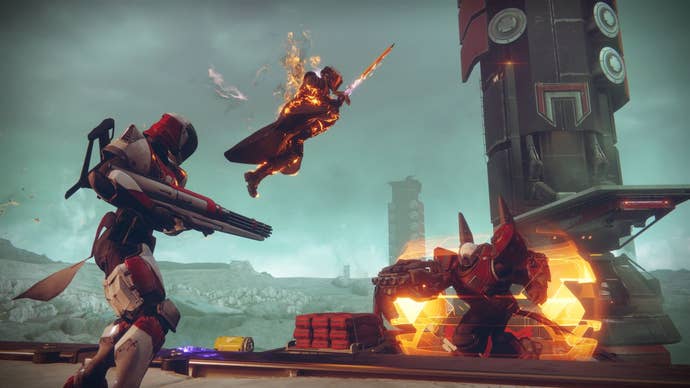
Increasing the Number of Activities
Destiny 2 has 5 strikes, replayable missions that grant players high level rewards for completing them. In a perfect world, Bungie would be able to add more, but the hardest part of development is content creation, a process that requires a huge team and great tools to complete in a timely manner. Bungie isn’t capable of adding dozens of new strikes immediately, but that doesn’t mean it can’t give players more to do.
In Destiny, Bungie added three new kinds of replayable activities: the Prison of Elders, Court of Oryx, and Archon’s Forge, but they all had their weaknesses. Prison of Elders had three identical waves in every non-boss encounter and only three objectives to complete in those rooms. At one point, the highest-level version of Prison of Elders featured a raid-length gauntlet that led to one of its most enjoyable fights—the Skolas encounter—but it took so long to get there and there were no checkpoints. When combined with the predictability of Prison of Elders, it’s not surprising that most players never completed it. The modes weren’t perfect either. Archon’s Forge required keys, but players could only carry one key at a time. Court of Oryx's loot wasn’t great, while Prison of Elders could get repetitive and didn’t have checkpoints for its lengthier encounters.
Destiny isn’t the only series with this kind of wave-based mode. Epic’s Horde 2.0 from Gears of War 3 is one of my favorite modes in a video game, while Halo 3: ODST and Reach had its own horde mode Firefight.
It would be wonderful to see Bungie repurpose its Crucible maps, or even bring back the Court, Forge, or Prison with more diversity and without the arbitrary key limits that held them back. Rewarding players for performing well by giving players single-use weapons like axes and scorch cannons or dropping heavy ammo crates would be fantastic. Adding dozens of unique bosses, or even bringing back old enemies like Qodron, Skolas, and Urrox, would be lovely too. Adding additional objectives like “get 50 shotgun kills as a team this round” or “generate 25 orbs in this room” would help the experience feel less repetitive as players revisit encounters.
Personally, I’d also like to see Bungie revamp patrols. Every week, Destiny 2 features a “Flashpoint” planet, but these changes aren’t significant enough to be exciting. Imagine a Nightfall Patrol, where a team of six players enters a unique patrol instance with Nightfall mission modifiers. Some modifiers might be enjoyable, like the fan-favorite Catapult, which dramatically increases grenade recharge rates, or Arc Burn, which doubles arc damage, but others could make things more challenging.
Like old-school Nightfall strikes, if all the players die, the team is returned to orbit, so they’re encouraged to play cautiously. Maybe Bungie could spawn unique bosses or extra-hard public events on each section of the map. Players would have to complete a set number of patrol missions, Nightfall events, or bosses in order to get their rewards.
Giving players a nice, tight combat experience with greater flexibility than scripted strikes or raids require would be a tremendous improvement to the game. The Division’s Patch 1.8 found great success in this method, and the amount of work required is significantly less than creating entirely new levels from scratch would be.
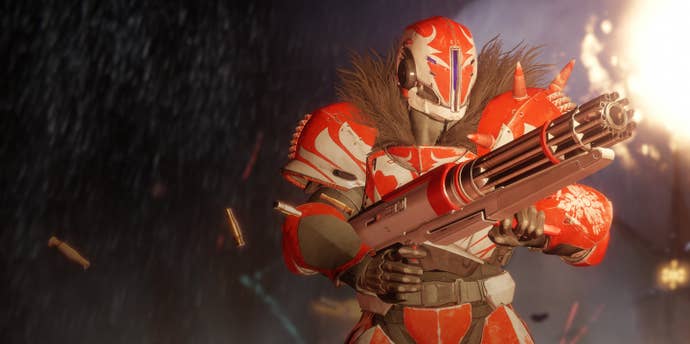
Bring Back the Good Stuff
So, let’s say Bungie solves the weapon and loot problems, and gives players new ways to be engaged and explore old places. Would that be enough to bring people back to the game? It might be, but some players may still be feeling a bit sour. If Bungie really wants to excite players, but developing new content would take too long, the best thing it could do is simply bring back old content. While it would be exciting if everything came back, it would still be great if Bungie could bring back even one planet, its strikes, and its raid.
Great service-based games, like The Division and Rainbow Six Siege, don’t remove, they add. During Destiny’s life, Bungie took years to bring the Vault of Glass forward, while leaving amazing fights like Skolas and Qodron behind. Most service-based games add, but as a sequel Destiny 2 left six entire planets and hundreds of guns, armor, encounters, and cosmetics in the dust. If the old weapon system was brought back, there would be no problem with Bungie letting players import all their old guns. After all, Gjallarhorn is Destiny’s mascot weapon, it has to come back at some point.
It would be thrilling to see even one planet brought forward to Destiny 2. My vote would be for Venus, because Bungie could bring the ever-popular Vault of Glass into Destiny 2. It would be a wonderful decision, especially for PC players who would love to play the Vault of Glass for the first time at 60 frames per second.
It’s not a simple copy-paste job, but it would be a lot easier than building all new content. The art assets already exist for current-gen systems. When it comes to weapons, Bungie already has the animations, models, and plenty of data on weapon balancing, so much of their work is already done for them.
Bungie’s balancing process, where they nerfed things like the Hunter grenades because they were popular, needs to see some revisions. Nerfing the Hunters because they’re popular is like McDonald’s trying to make Big Macs with broken glass because it’s their best-selling sandwich. If people like it, Bungie should try to make other things just as successful, not make popular features worse. Bringing back the sticky tripmine and returning the double-tripmine bonus to the Young Ahamkhara’s Spine would earn Bungie a lot more goodwill.
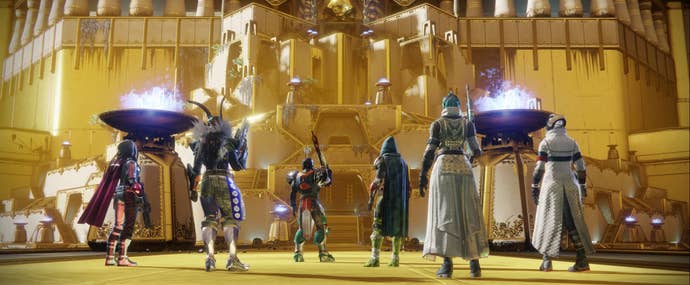
Don't Fix What Ain't Broke
If you’re noticing that Destiny didn’t need any of these fixes, well, there’s a reason for that: most of the challenges Destiny 2 faces are problems Destiny already addressed. As the saying goes, “don’t fix what ain’t broke,” but that’s exactly what Destiny 2 attempted, and in the process, it broke everything.
There are so many other things that could make Destiny 2 better. Letting players replay story missions at will would be great, unlike the current setup, where players can only play three randomly-selected missions each week. Destiny did it better; players could select any mission they wanted at any time or partake in the heroic mission playlist. Adding text chat to every region in the game would also be wonderful. Redesigning Trials of the Nine to play more like it used to would be thrilling. Adding six-player patrols would be exciting. I would love to see frequent, sizable DLC, new classes, new races, and everything that one might expect from a sequel.
But most of the things that are gonna bring players back to the game are the mechanics that plenty of developers, Bungie included, have used to solve challenges facing their games in the past. The perfect Destiny 2 patch isn’t about crazy new features, nor is it about turning Destiny 2 into Destiny, as great as that would be. It’s about solving Destiny 2’s avoidable problems and getting the fans excited again. Once you do that, you can bring players back to the game.
Bungie announced the new Warmind expansion and additional updates today. Check out our Destiny 2 guides here.

